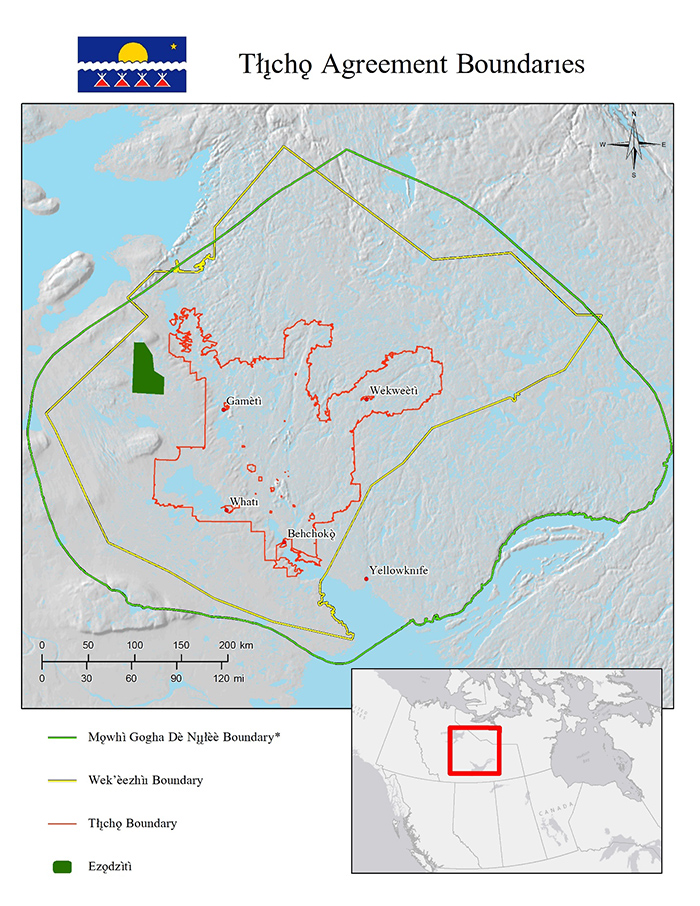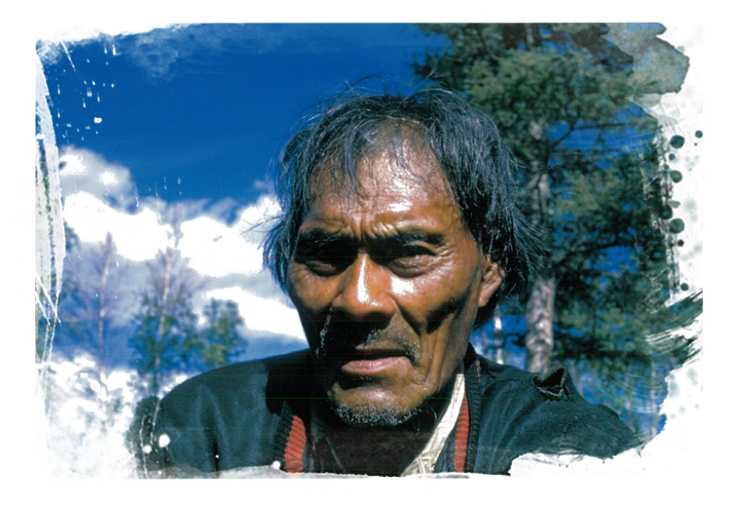Lands Protection is part of the the Department of Culture and Lands Protection and is responsible for managing Tłı̨chǫ lands and resources. Tłı̨chǫ lands are comprised of 39,000 km2 of lands where the Tłı̨chǫ people own surface and sub-surface rights. The Department works closely with other governments, environmental and government agencies, and resource development companies.
Lands Protection staff are guided by the Tłı̨chǫ Wenek’e: Tłı̨chǫ Land Use Plan. The words “Lands Protection” were chosen to reflect the priorities of the Tłı̨chǫ Government in managing Tłı̨chǫ lands. The Tłı̨chǫ Government’s priority is to foster and encourage traditional activities, act as stewards of the land, and protect the lands and resources for present and future generations. Lands Protection provides recommendations on proposed activity and development to the Tłı̨chǫ Government, including support and advice on issues of renewable resource management such as caribou and other wildlife management, plant harvesting and forest management on Tłı̨chǫ lands. Culture and Lands Protection also works in collaboration with other Governments and Agencies in co-management of the above mentioned renewable resources. The Department makes recommendations on policies and procedures and is the main point of contact for intergovernmental arrangements.
The responsibilities that have been assigned to the Lands Department by the Tłı̨chǫ Government include:
- Developing, implementing and maintaining the Tłı̨chǫ Land Use Plan;
- Providing land administration services;
- Monitoring activities on Tłı̨chǫ Lands;
- Providing recommendations regarding the use of Tłı̨chǫ Lands;
- Communicating information on land use activities;
- Maintaining a GIS library of digital mapping; and
- Communicating, as required, with other agencies on matters arising from proposed activities or development.
Partnerships
Lands Protection staff advise the Chiefs Executive Council on Inter-Governmental & Agency relationships related to federal initiatives related to the operations of environmental boards and agencies in the NWT, as well as the devolution of authorities over Crown lands from Canada to the GNWT, and the impact on Mǫwhì Gogha Dè Nı̨ı̨tłèè. Culture and Lands Protection is the working contact for Governments for issues, including but not limited to: access requests under Chapter 19 of the Tłı̨chǫ Agreement, Tłı̨chǫ heritage resources (Chapter 17), protected areas (Chapter 16), expropriation (chapter 20). Culture and Lands Protection is the primary point of contact for the environmental boards in dealing with applications by developers or other proponents relating to Tłı̨chǫ lands, Wek’ èezhìi and Mǫwhì Gogha Dè Nįįtłèè. Culture and Lands Protection receives notices and ensures requests are processed by the proper Tłı̨chǫ Government institution, department or working group. Culture and Lands Protection maintains a list of Tłı̨chǫ representatives on environmental boards and agencies and ensures Tłı̨chǫ representation is maintained.
Lands Protection is the primary liaison with the Tłı̨chǫ Government Kwe Beh Working Group which was created to build capacity of the Tłı̨chǫ Government to manage mining files. Overlapping interests occur specifically in the regulatory process of environmental assessment for any files.

Tłįchǫ Agreement Boundaries



